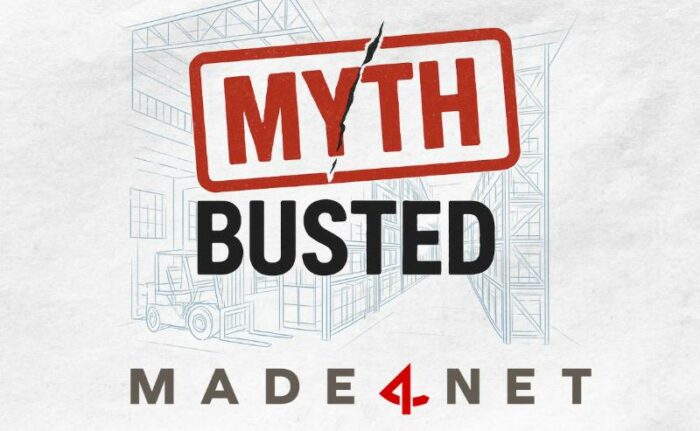
You are probably very familiar with Gartner and the Gartner Magic Quadrant for Warehouse Management Systems (WMS) report that is published annually and features the recognized vendors in the industry. What do you know about the Gartner Critical Capabilities for Warehouse Management Systems? Gartner created the Critical Capabilities report as a companion piece to the Magic Quadrant to provide a deeper dive into the 9 key capabilities that companies should pay attention to when evaluating warehouse management systems to help companies choose the right WMS.
The Critical Capabilities report also references the Gartner report, “Understand the 10 Dimensions of Warehouse Complexity Before Evaluating WMS Solutions,” which stratifies warehouses into 5 levels of complexity. Together, these three reports give companies deeper insight into their own operations and provide visibility/guidance into finding the RIGHT FIT WMS for their operations.
How should you use Gartner research to guide your WMS selection? We recommend starting with the Magic Quadrant. Gartner analyzes and evaluates different vendors based on their Ability to Execute and Completeness of Vision. Made4net is proud to be included in the Gartner WMS Magic Quadrant for 7 consecutive years.
In our opinion, after looking at vendor options in the Magic Quadrant, companies should look for the solutions that provide the right fit. This is where the Gartner Critical Capabilities report comes in useful. If you’re searching for a new WMS, use the Gartner Critical Capabilities for Warehouse Management Systems research to perform a deeper dive into specific WMS products.
Gartner® Critical Capabilities for Warehouse Management Systems
According to Gartner, “As a companion to the Magic Quadrant™, a Critical Capabilities report scores competing products and services against a set of meaningful differentiators. It reveals which options are the best fit in various Use Cases to help you focus on the vendors best suited to your needs.”
Not all solutions are created equally, and many factors should be taken into consideration: functionality, cost, deployment timeframe, support, ease of use, adaptability and many more.
In fact, Gartner says, “Reconcile the competing interests of functionality versus intangible characteristics, such as usability, adaptability, implementation support and simplicity, by assessing all relevant capabilities that are assessed in this research.”
Key Findings
The report starts by outlining three key findings of this research:
#1 “Innovation continues to distinguish warehouse management system (WMS) offerings. New capabilities are emerging, such as advanced analytics and machine learning, employee engagement, and robotics integration. Other capabilities are maturing, such as usability, composability, implementation tools and material handling automation support.”
#2 “The polar opposite extremes of WMS support for the simplest Level 1 and the most complex and automated Level 5 Use Cases contrast vendors and solutions dramatically.”
#3 “WMS technical architecture has become a more important consideration for new WMS buyers who seek flexibility, adaptability, composability, usability and affordability.”
Recommendations
The research then suggests that those responsible for the selection of warehouse management solutions should:
- “Determine the people, process, organizational, data and technology needs of each warehouse operation and focus WMS evaluations on the appropriate Use Cases by applying Gartner’s warehouse stratification model (complexity Levels 1 through 5).”
- “Target the solutions best suited to your distinctive WMS Use Cases by developing a right-fit shortlist of vendors and solutions, using this research as a guide in combination with the WMS Magic Quadrant.”
- “Reconcile the competing interests of functionality versus intangible characteristics, such as usability, adaptability, implementation support and simplicity, by assessing all relevant capabilities that are assessed in this research.”
Strategic Planning Assumptions
Next up, the research highlights several key assumptions to support planning such the fact that, “Through 2025, technical architecture will equal functionality in importance for new WMS buyers seeking flexibility, adaptability, composability, usability and affordability.” And, “By 2025, support for intralogistics smart robotics solutions will be a primary consideration for WMS buyers.”
Analysis
The heart of this research evaluates solutions against what “Gartner considers to be the nine key differentiating product capabilities across five major Use Cases of warehouse and distribution center operational needs based on warehouse complexity.”
The nine critical capabilities considered in the report are, “core and extended functionality, usability, analytics, implementation tools, adaptability, supporting technology, material handling integration, and overall simplicity of use and operation.” And, “the Use Cases are based on Gartner’s warehouse stratification model that categorizes warehouse operational environments from very simple Level 1 environments to potentially highly complex and automated Level 5 facilities.”
Vendors
Following the analysis, evaluation of each vendor’s performance is included. Covered are the 17 vendors included in the 2022 Gartner® Magic Quadrant™ for Warehouse Management Systems. Most vendors have only one WMS highlighted in the research, however, the research highlights two products from three vendors as each of these vendor’s two solutions specifically target different strata of warehouse operation.
Use Gartner research to choose the right WMS
Supply chain and IT leaders should use Gartner research as part of an evaluation of warehouse management system products. You can get a complimentary copy of the 2023 Gartner Magic Quadrant for Warehouse Management Systems here. On the Gartner website, you can check out the Critical Capabilities report. When you do, you’ll see how Made4net is placed in the first half of 4 of 5 of Use Cases.
Schedule a demo today to learn why.
Disclaimer:
Gartner, Use Gartner’s Model to Understand the 10 Dimensions of Warehouse Complexity Before Evaluating WMS Solutions, Simon Tunstall, Dwight Klappich, 26 July 2021.
Gartner, Critical Capabilities for Warehouse Management Systems, Simon Tunstall, Dwight Klappich, Rishabh Narang, 1 August 2022.
GARTNER and Magic Quadrant are a registered trademark and service mark of Gartner, Inc. and/or its affiliates in the U.S. and internationally and are used herein with permission. All rights reserved.
Gartner does not endorse any vendor, product or service depicted in its research publications and does not advise technology users to select only those vendors with the highest ratings or other designation. Gartner research publications consist of the opinions of Gartner’s research organization and should not be construed as statements of fact. Gartner disclaims all warranties, expressed or implied, with respect to this research, including any warranties of merchantability or fitness for a particular purpose.


